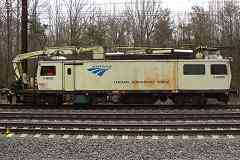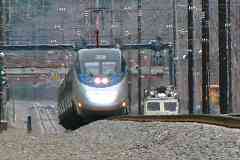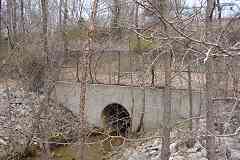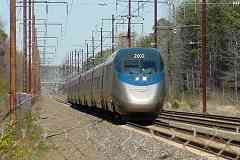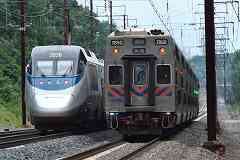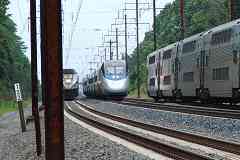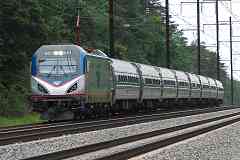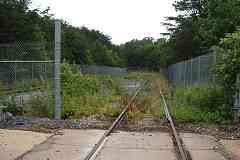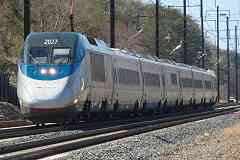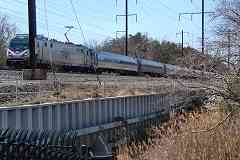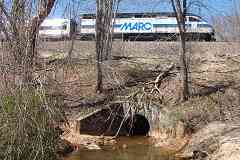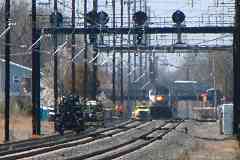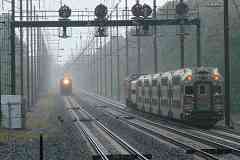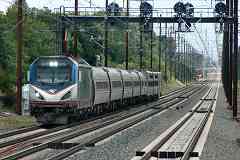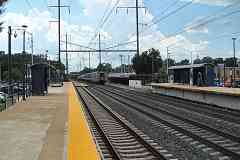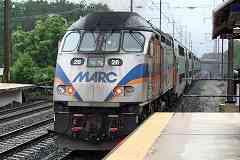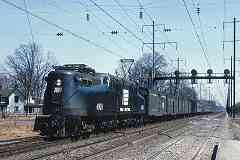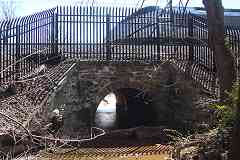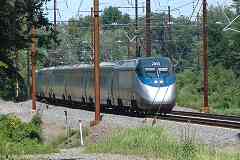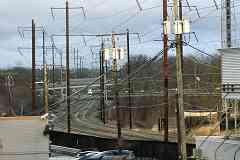|
Enduring almost till 1990, Springfield Road, the last grade crossing to be
eliminated on the Northeast Corridor between Washington, DC and New York,
provided a nice spot to watch AMTK 2002 zoom past. The fencing has changed
since photo time. A 1904 map places Springfield Station within the
southeast quadrant of the crossing.
This is the first known photo of Acela power car number 2002. Due to various
problems, the Acela units replaced Amtrak's Metroliners more slowly than
initially anticipated. Metroliner service endured until 2006.
The "Amtrak" name in red on the nose would disappear around 2006 only to
briefly return in blue during 2010. This probably reflects nose panels being
swapped during maintenance.
Per local resident Derald, as confirmed by topo maps, this stretch of the
line was shifted southeast (right) during its 1930s electrification into
the position seen here. The original route is buried in Derald's yard.
| 